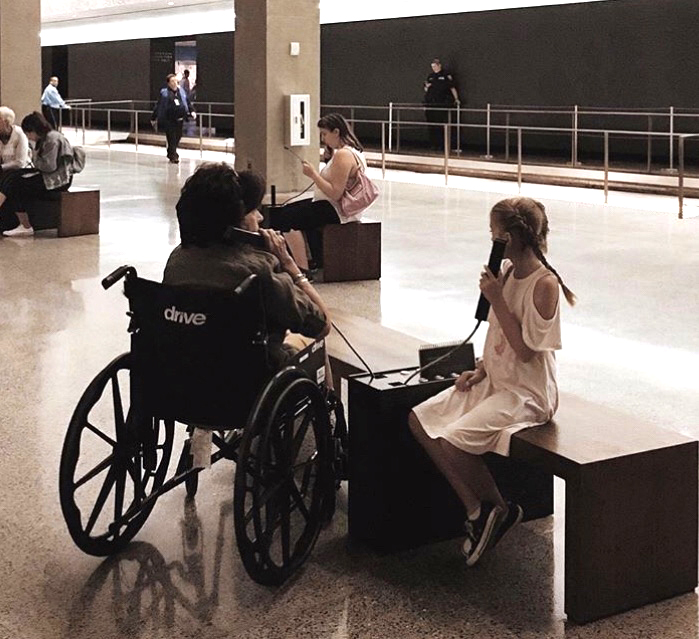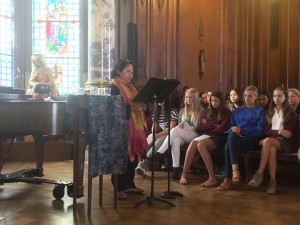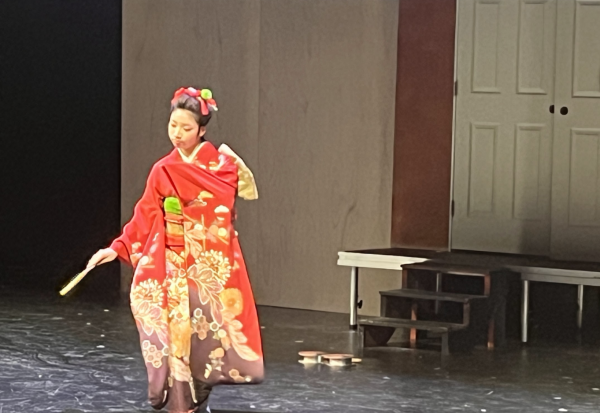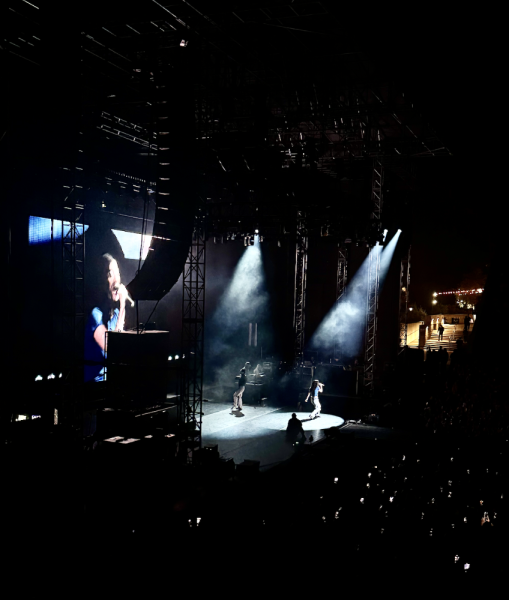9/11 terrorists attacks still affect survivors
New York’s 9/11 Memorial provides a place for remembrance, education
Mia Wu | Special to The Broadview
Visitors at the National 9/11 Memorial and Museum listen to an auditory exhibit featuring last phone calls of victims who crashed in the terrorist attacks. The museum showcases over 11,000 articles.
September 11, 2018
Today marks the 17th anniversary of the Sept. 11, 2001 terrorist attacks that brought down four passenger planes into the World Trade Center, the Pentagon, and a field in Pennsylvania. Those who remember the tragic day and those who were born after the events continue to visit the National 9/11 Memorial and Museum in New York City to honor those were affected by the attacks.
NEW YORK — Julie Sweeney Roth’s husband Brian Sweeney, a member of the United flight 175 was killed in the al-Qaeda Islamic terrorist attacks on September 11, 2001 as the plane crashed into the South Twin Tower of the World Trade Center.
Sweeney, a pilot himself, realized the plane had been hijacked and called his mother, Louise Sweeney, and Roth to say his final goodbyes. Roth shares Sweeney’s story with visitors of the National 9/11 Memorial and Museum in New York City and says hearing it exponentially magnifies the museum experience.
“I am proud of Brian and I am proud to tell his story,” Roth said. “People talk about closure but there is no such thing. This event will always be a part of my life and it has made me who I am today which is why I want to tell the story.”
Sweeney’s last call is now on display in the auditory exhibit of the museum, which showcases more than 11,000 artifacts according to the 2017 Memorial and Museum annual report. Pieces of crushed steel from the Twin Towers, and personal items such as wedding rings, and handwritten notes can be found nearby.
“This museum is not only for the mind, but it is also for the heart,” Thomas Canavan, who works at the museum and at an anti-terrorist organization said. “You feel guilty because you think ‘Why did I survive?’ But as the years go on you feel lucky because now you can be the voice for them.”
While many individuals have been able to move on from the events of 9/11, it takes family members and witnesses much longer. Roth said it took her eight years before she could tell her husband’s story, and that even now she gets nervous about decision making since Sweeney changed his flight the night before.
“When I do things in my own life and my kids are involved I think ‘Did I just make a life-altering decision?’” Roth said. “I could make a left turn instead of a right turn but was the right turn going to save me and the left turn going to get me into a car accident? I think like that and it gets me a little bit anxious.”
Within 110,000 square feet and seven stories down to bedrock, the museum honors the nearly 3,000 men, women and children murdered in the attacks and provides spaces for family members and survivors to tell their story in a Tribute Museum. However, there is not a space for victims who still physically feel the effects of 9/11 today.
Zoe Glasser, 17, who was born a day after 9/11, is one of 400,000 people, according to the Center for Disease Control and Prevention, now suffering from chronic illnesses or form of injury due to the attacks.
Glasser was diagnosed with epilepsy at age 7, while her twin brother was diagnosed with epilepsy this year, her father a first responder emergency medical technician battled PTSD, and her mother fought chemo and breast cancer.
“9/11 is unfortunately very relevant in my life today even though I was negative one day old and never experienced it myself,” Glasser, who visited the memorial with her family, said. “My parents speculate that the [epilepsy] was caused by chemicals and radiation on our very young brains and created too much excess brain activity.”
For many pre 9/11 generation visitors, the museum brings back emotions that they had first experienced upon hearing the news of the attack. Visitor Dan Archibald said it made him remember how destructive the attack was and how many people died.
“I usually do not think about [9/11] anymore and I was stunned because my 10 and 8-year-old grandchildren did not even know about it,” Archibald said, “but seeing the pictures of the people that died brought it all back from a more personal angle, putting faces with names.”
Pre 9/11 generation visitor Sally Wald said she came to the museum and memorial to “replace the picture of the flames with a positive picture.”
“I was thinking about how beautiful the museum is and the passion that it took to create something so beautiful and yet how juxtaposed with the evil it took to take down the towers,” museum visitor Deidre Hicks said.
The museum and personal stories immersed through the exhibits play a big role for younger generations who never experienced the attacks and can only rely on information they learn from their families, schools and personal research.
“Of course I have heard a lot about 9/11 — I talk about it with my parents and learn about it every year at school — but [the museum] makes it all more personal,” 17-year-old Alex Liebetre said. “It is really touching to see the people who were affected and the wider effect on society today. My parents say it is something they will always remember and that everyone should learn about.”
The events of 9/11 span internationally as well, with students outside of the United States also learning about the attacks at school and from family. Jade Iusco, a student from Italy, has no connection to 9/11 but said she wanted to learn more about it through the museum.
“For us it is an important date but not as important as for the American people,” Iusco, who learned about 9/11 in her English class said. “Even if we are Italian, it should still be important to us and for people all over the world, I just never experienced an attack like that before.”
The museum has hosted nearly 11 million people since its opening in 2014, according to the 2017 annual report, chronicling the events of 9/11 and central themes including “heroism, violence, solidarity, and remembrance” said tour guide Madeline Thompson. There are still many unidentified objects and personal stories that are being uncovered in recent years.
“It is hard to imagine something unless you were here, unless you witnessed it, especially something as iconic as the Twin Towers,” Roth said. “In 50 or 60 years from now when anybody comes through here who was not involved [in 9/11], they need to hear the full story because it affects all of us.”













